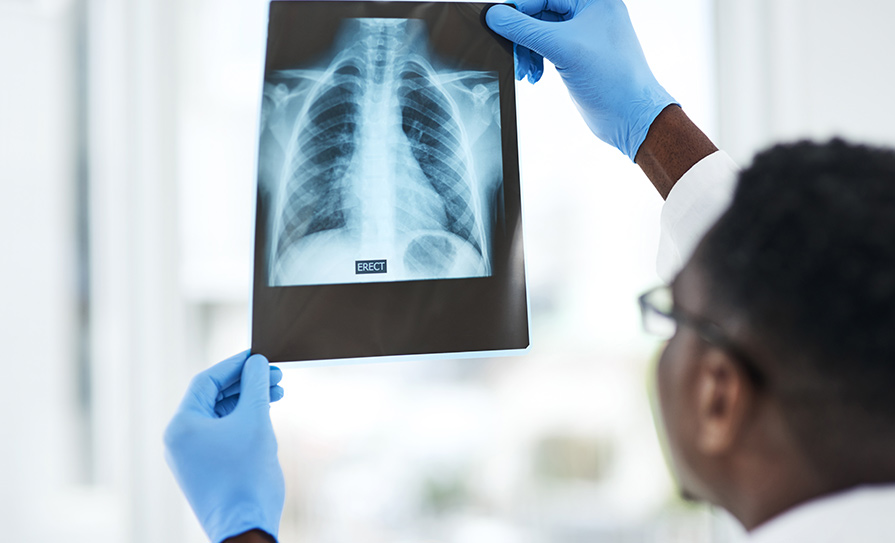
The first guest speaker at the Irish Thoracic Society Annual Scientific Meeting was Dr Eleanor Dunican, Consultant in Respiratory Medicine at St Vincent’s University Hospital, Dublin, and Associate Professor in University College Dublin. Dr Dunican has a special interest in asthma, and delivered an engaging overview of the role of mucus plugging in the pathophysiology of the disease, and explored the potential CT imaging has to identify a novel mucus phenotype. Her presentation was entitled ‘Seeing is believing: Imaging of mucus plugs in asthma and COPD’.
Referencing her own notable body of work and other relevant studies throughout, Dr Dunican began with a general overview of segmental ventilation defects on MRI imaging, and their direct associations with airflow limitation in asthma patients. “These ventilation defects are far more pronounced in asthma patients who are eosinophilic, and tend to persist after bronchodilation,” she said.
Dr Dunican then presented a wealth of evidence verifying correlations between mucus plugging on CT imaging and these ventilation defects on MRI.
Dr Dunican said she and her team “were surprised by how common mucus plugging was in asthma”, and that “the amounts of segmental defects were significantly higher” if a mucus plug was also present. “We next compared mucus score with changes in spirometry to test the hypothesis that the mucus plugs were in fact playing a causal role, rather than associated with airflow obstruction,” she continued, and presented a body of data to confirm the causal role, and verify, that if “the mucus score increased, there was a decrease in FEV1 [forced expiratory volume in the first second]”.
The meeting then received insight into the contribution eosinophils make to “the perfect storm” that leads to unhealthy mucus and plug formation. Dr Dunican presented the pathophysiology of disulfide bonds and cross-linking of mucin polymers that result in increased elasticity of mucus, and subsequent plug formation, and explored ways that eosinophil peroxidase-generated oxidants appear to drive these pathways.
Moving on to look at plugging in chronic obstructive pulmonary disease (COPD), Dr Dunican said that mucus plugs tend to be very persistent and prevalent in this cohort too, with higher incidences than asthma noted at 67 per cent of patients. Again, she described a correlation with airflow obstruction, and the prominence of mucus plugging in GOLD stage 3 and 4 patients. The room also heard “there is some mortality signalled with mucus plugging in COPD that is a bit worrisome”.
Dr Dunican highlighted the potential for CT as a biomarker for a mucus phenotype, saying that “without CT scans, we wouldn’t be able to identify these patients”, before moving on to explore ways to target plug formation. Returning to the pathophysiology, she said “it makes sense that a reducing agent can reverse that process”, because “the disulfide bonds in mucin polymers in the presence of a reducing agent will cleave to the two separate mucin polymers”.
“We’ve been using NAC [N-acetyl cysteine] for a long time”, Dr Dunican said. She explained that “the problem” with this approach is the difficulty of delivering high doses of NAC into the airway. She then concluded with an overview of ways the molecule is being chemically manipulated to formulate a novel therapy, AER-01, to overcome these drug deposition challenges. AER-01 is being developed by Dr John Fahy’s laboratory at the University of California, San Francisco, US, in collaboration with Stefan Oscarson, University College Dublin, and Prof Anne Marie Healy’s pharmaceutical technology laboratory, Trinity College Dublin.





Leave a Reply
You must be logged in to post a comment.